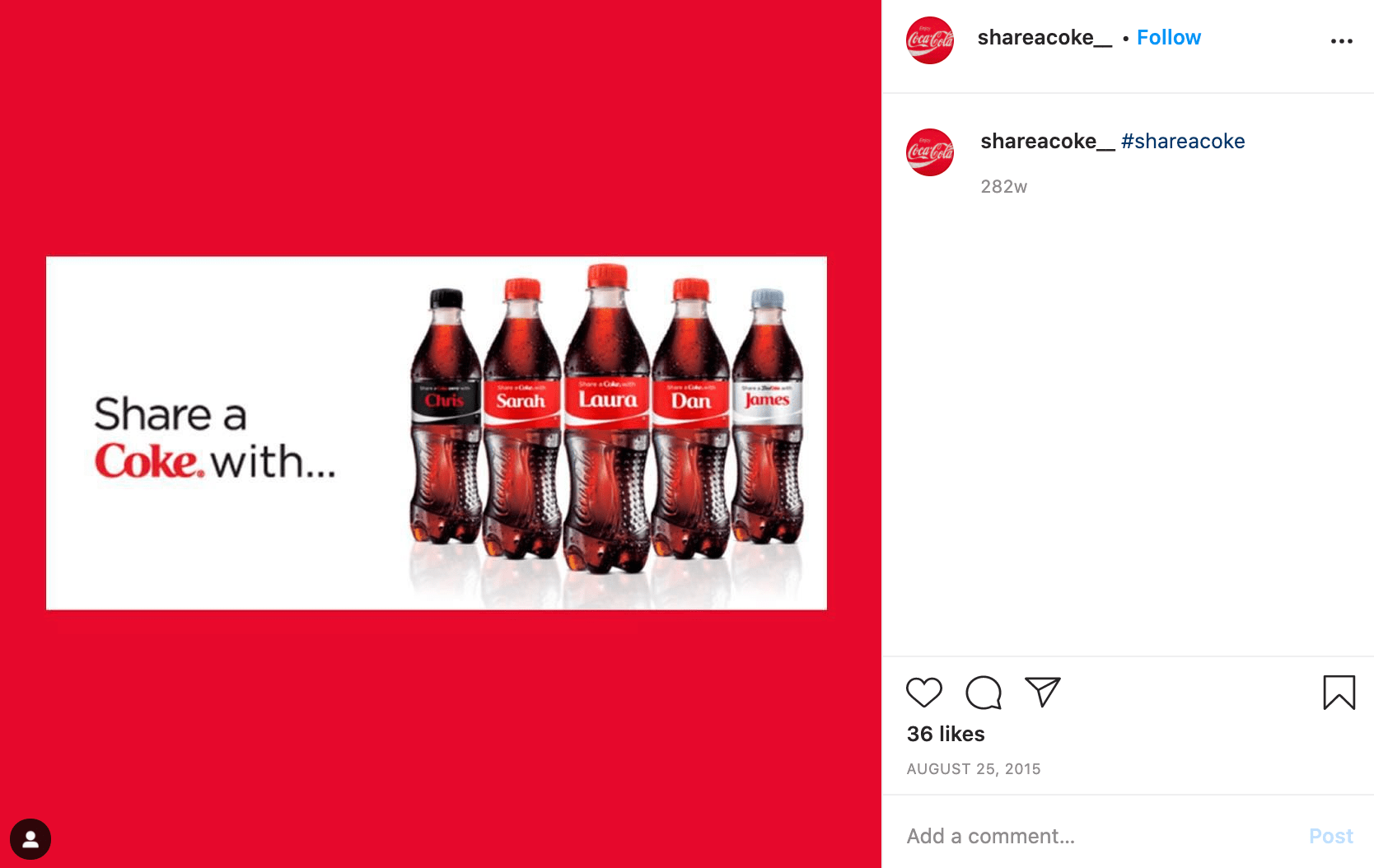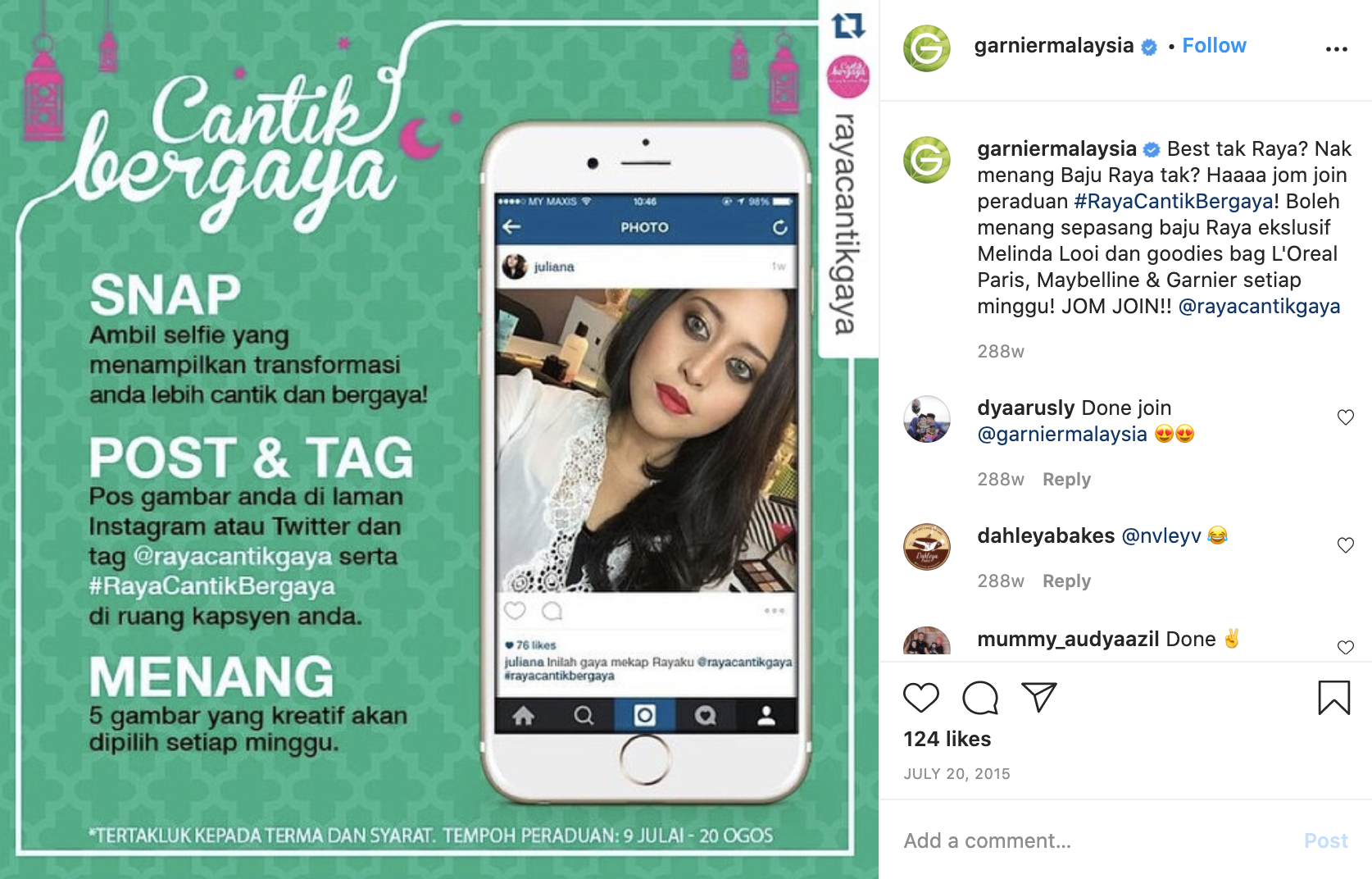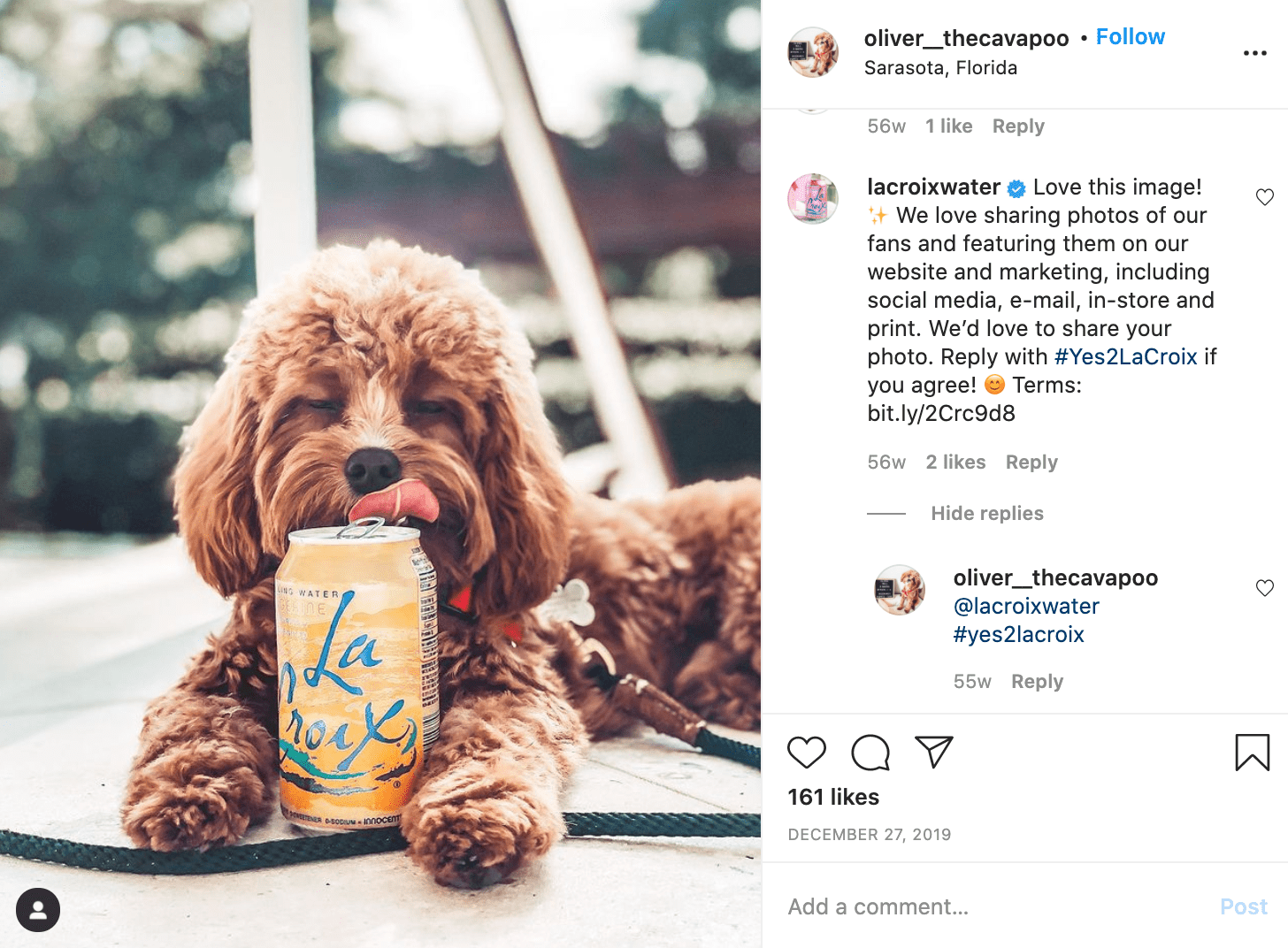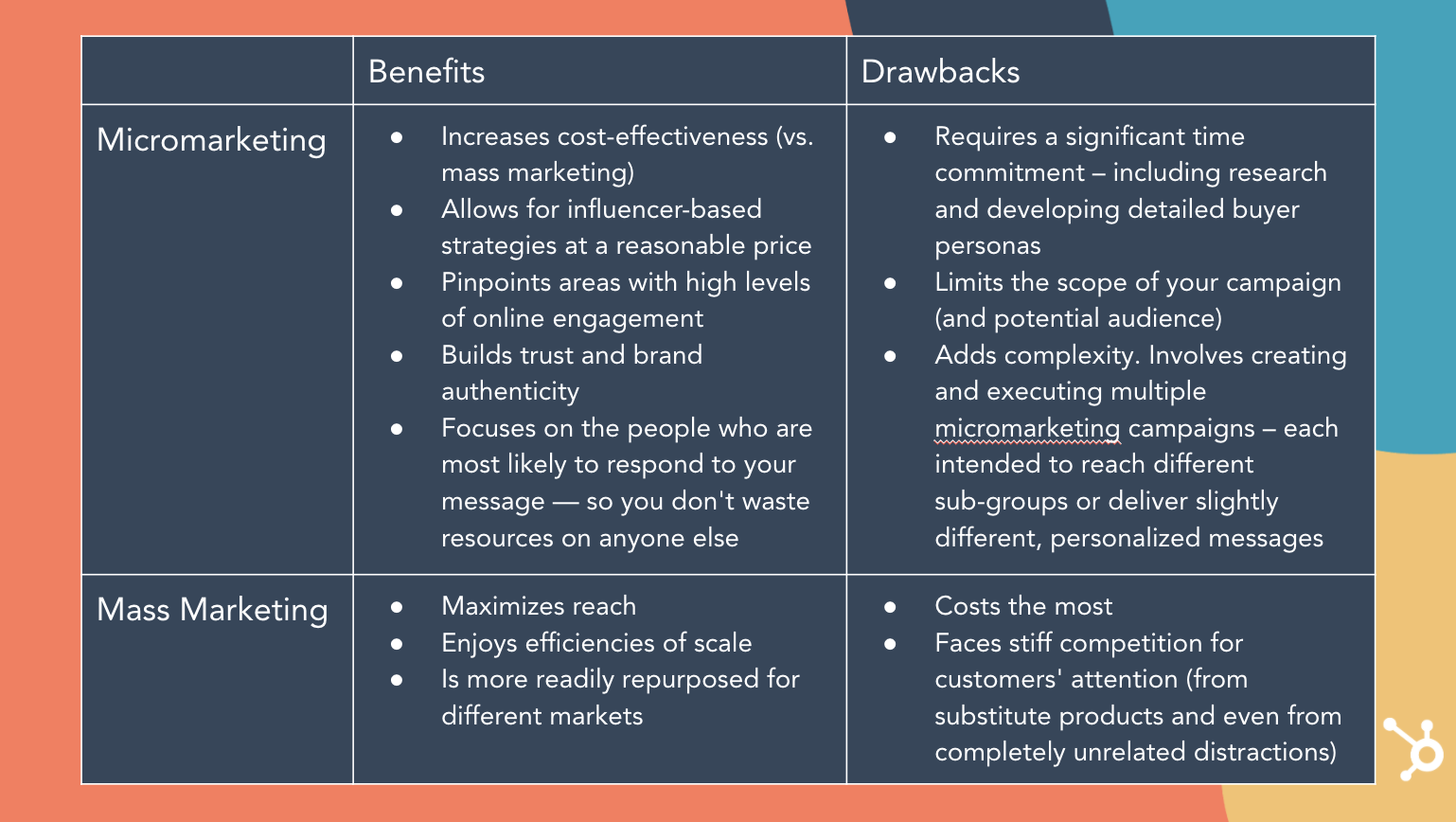How Micromarketing Can Take Your Strategy to the Next Level [+ Examples]
Good news: on the internet, your business can connect with hundreds of millions of potential customers.
Bad news: your competitors have the same access, and they’re already throwing money at the problem.
Also not so good: your mighty, scrappy team has to figure out how to connect with, well, hundreds of millions of potential customers.
Or do you?
For your business to go big, sometimes it helps to think small – especially when it comes to your marketing strategy.
We’re talking about micromarketing — targeting a small group from your customer-base — which can be a transformative strategy for your business.
Let’s dive into what micromarketing is, and why it’s important. Plus, we’ll explore examples to inspire your first micromarketing campaign.
What is micromarketing?
For your business, micromarketing means drilling down past the level of niche marketing (targeting a specific segment within the larger market) to target specific individuals or micro (“extremely small”) groups.
By targeting smaller, more specific audiences, you’re able to customize your outreach and use audience insights to tailor your messaging for more personalized, effective marketing.
Yes, this requires a different type of time and effort than more traditional mass marketing — and it’s worth it.
Why invest time and resources in micromarketing?
Micromarketing requires more resources — if you measure your efforts by potential customers reached.
However, targeting specific, segmented audiences is often more effective in the long-run towards acquiring high-quality leads and turning those leads into customers.
Sure, your first micromarketing campaign is unlikely to reach the same number of individuals as a Super Bowl Ad. But you’ll certainly spend far less than the required $5.6M for a 30-second spot.
And, just as importantly, you don’t want to reach every Super Bowl viewer, when you can create targeted ads that inspire and delight a smaller pool of very interested consumers.
With micromarketing, your efforts are aimed at crafting personalized messages, and talking directly to the individuals most likely to respond to your pitch. The benefits are in your ROI.
Mass Marketing vs. Micromarketing: Benefits and Drawbacks
As you can see, micromarketing requires a greater investment to target each individual, but a greater return on investment since each individual is much more likely to respond positively to your call-to-action.
Think of it this way: you might see your CPC (cost-per-click) rise with an online micromarketing strategy. But, when executed well, you’re also going to see an encouraging decline in your cost-per-conversion — a much more important KPI.
Micromarketing Opportunities
Considering and creating a micromarketing strategy is an opportunity to step back, consider alignment between your sales and marketing efforts, and make sure you’re first-and-foremost solving for your customers’ success.
Are you selling complex enterprise software or massive industrial machinery? There may only be a small number of potential customers in your region or industry. In this case, micromarketing is likely the most effective strategy for your needs –– you need to find your potential customers, and only your potential customers. Anything else is a waste of time and resources.
Here are some questions you should ask yourself when considering a potential micromarketing strategy for your business:
- Who buys your product?
- Who’s the decision maker who buys it for their company?
- Who does your product help the most –– and why is it so perfect for them?
- What are your customers’ needs, fears, hopes, and dreams? What are their interests and passions, and what makes them happy?
- Who do your customers follow online?
- Who does your ideal customer aspire to be?
- Who does your ideal customer most admire?
These questions, along with an ongoing grasp of your buyer personas, should lead you towards the answer to the two key questions that drive micromarketing decisions and campaigns:
1. Who is most likely to respond to your messages?
2. How can you best talk to them — and no one else?
For instance, if you know your product requires CMO buy-in, you can use strategic micromarketing to appeal to CMOs via a targeted marketing campaign on LinkedIn.
Ultimately, micromarketing helps you get your product directly in front of the eyes that matter most.
To see micromarketing in-action, let’s take a look at a few examples next.
Micromarketing Examples
1. Coke creates a “Share a Coke” campaign.

Coke’s “Share a Coke” campaign started in Australia, but has since expanded to over 70 countries. If you haven’t already seen a name on a Coke bottle, here’s the gist: the marketing team in Australia chose 150 of the country’s most popular names, and printed those names on Coke bottles with the command to “share the Coke” with friends and family.
The campaign is a fantastic example of micromarketing. The campaign enables Coke to connect locally with people in specific regions by identifying a group of names most popular in that area. And the results were astounding: the summer it first launched in Australia, Coke sold more than 250 million named bottles in a country with roughly 23 million people.
2. L’Oreal Malaysia leverages local, user-generated content.

L’Oreal uses micro-influencers and user-generated content to help break down geographical barriers for products, opening markets in an authentic, engaging – and personal – way.
For instance, L’Oreal Malaysia worked with local micro-influencers to create video tutorials of products for L’Oreal, Maybelline, and Garnier. The videos were shared directly to the influencers’ own audiences. As a result of the campaign, L’Oreal Malaysia saw a 12.9% increase in engagement rates, and 1.9 million trend impressions.
Instead of agonizing over individualizing content internally and navigating cultural differences, L’Oreal leveraged local influencers to increase interests in its products for each local market.
3. La Croix uses branded hashtags to find micro-influencers’ content and reach new audiences.

La Croix leverages micro-influencers by searching for Instagram users who’ve used branded hashtags such as #LiveLaCroix — and then asking those micro-influencers for permission to use the user-generated content in La Croix’s marketing materials.
This greatly cuts costs since La Croix doesn’t need to produce the materials, and it also enables La Croix to target each of the micro-influencers’ audiences for more personalized, effective content.
4. Sperry reposts influencers’ content on its own account.
Sperry identifies influencers around sharing Sperry products on various social channels, and reposts those images to the official Sperry account.
This enables Sperry to leverage on-brand content with a pre-built segmented audience, while foregoing a more official influencer strategy that would require more budget and resources. Instead, these micro-influencers are satisfied with recognition and exposure as a form of compensation.
![]()





